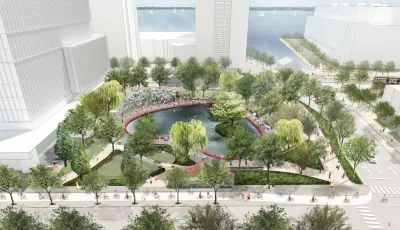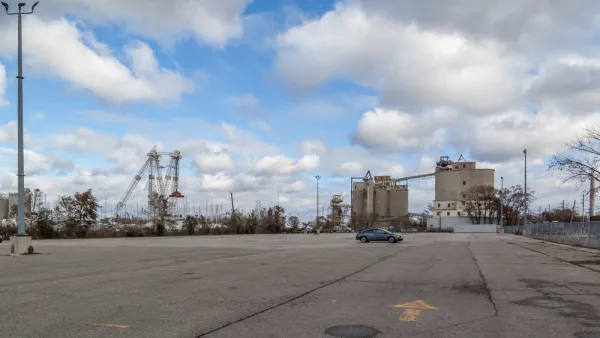In a reversal from Sidewalk Labs’ now-defunct tech-heavy proposal, Toronto’s new plan for the waterfront development known as Quayside emphasizes greenery and nature.

After the spectacular failure of Sidewalk Labs’ ambitious plan to redevelop Toronto’s waterfront into a tech utopia called Quayside, the city has a new plan that favors nature over technology, writes Karrie Jacobs in Technology Review.
The Sidewalk Labs ‘smart city’ proposal encountered opposition from the beginning. “The project’s tech-first approach antagonized many; its seeming lack of seriousness about the privacy concerns of Torontonians was likely the main cause of its demise.” As Jacobs writes, “By May 2020, Sidewalk had pulled the plug, citing ‘the unprecedented economic uncertainty brought on by the covid-19 pandemic.’ But that economic uncertainty came at the tail end of years of public controversy over its $900 million vision for a data-rich city within the city.”
Toronto hired a new design team to create a new vision for the site. “The new Waterfront Toronto project has clearly learned from the past. Renderings of the new plans for Quayside—call it Quayside 2.0—released earlier this year show trees and greenery sprouting from every possible balcony and outcropping, with nary an autonomous vehicle or drone in site.” In the new plan, Jacobs observes, “The pendulum has swung back toward Howard’s garden city: Quayside 2022 is a conspicuous disavowal not only of the 2017 proposal but of the smart city concept itself.”
The plan leaves open questions about the actual impact of its “green” infrastructure. Jacobs wonders, “How many pocket forests and neighborhood farms will it take to cool the planet?” But “Whatever its practical impact, renderings of the new version of Quayside suggest a more livable place” and a deeper understanding of what makes cities desirable places to live.
FULL STORY: Toronto wants to kill the smart city forever

National Parks Layoffs Will Cause Communities to Lose Billions
Thousands of essential park workers were laid off this week, just before the busy spring break season.

Retro-silient?: America’s First “Eco-burb,” The Woodlands Turns 50
A master-planned community north of Houston offers lessons on green infrastructure and resilient design, but falls short of its founder’s lofty affordability and walkability goals.

Delivering for America Plan Will Downgrade Mail Service in at Least 49.5 Percent of Zip Codes
Republican and Democrat lawmakers criticize the plan for its disproportionate negative impact on rural communities.

Test News Post 1
This is a summary

Test News Headline 46
Test for the image on the front page.

Balancing Bombs and Butterflies: How the National Guard Protects a Rare Species
The National Guard at Fort Indiantown Gap uses GIS technology and land management strategies to balance military training with conservation efforts, ensuring the survival of the rare eastern regal fritillary butterfly.
Urban Design for Planners 1: Software Tools
This six-course series explores essential urban design concepts using open source software and equips planners with the tools they need to participate fully in the urban design process.
Planning for Universal Design
Learn the tools for implementing Universal Design in planning regulations.
EMC Planning Group, Inc.
Planetizen
Planetizen
Mpact (formerly Rail~Volution)
Great Falls Development Authority, Inc.
HUDs Office of Policy Development and Research
NYU Wagner Graduate School of Public Service



























